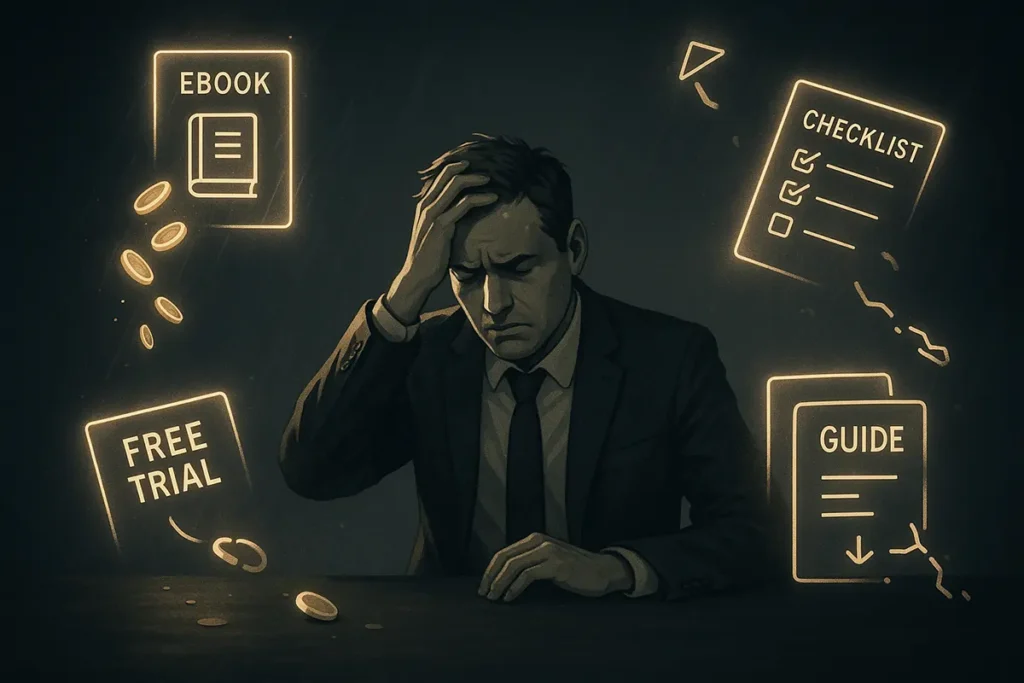When most people start posting on LinkedIn, they expect instant results. They share a few posts, get 20 views and maybe 2 likes from colleagues, then decide, “LinkedIn doesn’t work for me.”
Meanwhile, others consistently rack up thousands of views, build authority, and attract clients, even without running ads. What’s the difference? It’s not luck, it’s not a fancy algorithm trick. It’s about knowing how LinkedIn really works and playing the game strategically.
Over the years, I’ve seen people go from zero visibility to thought leaders in their industry by using simple but powerful growth hacks. These aren’t gimmicks; they’re habits that compound into authority, trust, and leads.
Here are 7 LinkedIn growth hacks that actually work.
1. Hook Like a Pro
On LinkedIn, the first three lines of your post are everything. That’s what shows before “see more.” If you don’t stop the scroll there, your post dies, no matter how good the content is underneath.
Too many people start with bland intros like “Happy to share an update” or “We’re excited to announce.” Nobody clicks on that.
Instead, start with curiosity, emotion, or a bold statement.
Examples:
- “90% of LinkedIn posts fail in under 24 hours. Here’s why.”
- “I almost quit LinkedIn last year… and then this happened.”
- “Stop posting like a résumé. Start posting like a leader.”
A great hook doesn’t just get clicks, it positions you as someone worth listening to.
2. Consistency Over Bursts
LinkedIn rewards consistency, not random bursts of activity. Posting 10 times in one week and then disappearing for a month confuses both the algorithm and your audience.
I’ve seen accounts grow steadily just by posting 3 times a week, every week. Why? Because authority is built through repeated visibility. When people see you show up consistently, they start trusting you.
If daily posting feels overwhelming, pick a rhythm you can sustain. Think of it like working out, you don’t need to hit the gym for three hours in one day, you just need to keep showing up regularly.
3. The Engagement Warm-Up
Here’s a hack most people miss: engage before you post.
Spend 15 minutes commenting on other people’s posts in your niche. Thoughtful comments (not just “Great post!”) signal to LinkedIn that you’re an active contributor. When you then publish your own post, it gets an early boost in reach.
Plus, the people you engage with are more likely to return the favor. This isn’t just an algorithm trick, it’s relationship building. On LinkedIn, reciprocity is real.
4. Carousel Power
If you’re not using carousels (LinkedIn calls them document posts), you’re missing a growth engine.
Carousels turn your ideas into a swipeable mini-presentation. They’re perfect for frameworks, checklists, step-by-step guides, or cheatsheets. The interactive format keeps people on your post longer, which the algorithm loves.
For example:
- “5 Steps to Writing Ad Copy That Converts”
- “The LinkedIn Content Calendar Template You Need”
- “7 Mistakes Founders Make When Pitching Investors”
Pro tip: keep slides clean and bold. One big idea per slide. Carousels don’t just get reach, they get saves and shares, which multiply your visibility.
5. DM Networking (Without Pitching)
Most people ruin LinkedIn by treating DMs like cold email. They connect and immediately pitch. Result? They get ignored, blocked, or mocked in screenshots.
The real hack is to use DMs to build relationships. Send a voice note thanking someone for their post. Share a resource related to something they mentioned. Ask a genuine question instead of pitching.
When you show up as human, opportunities open naturally. I’ve seen collaborations, client deals, and even friendships start this way. LinkedIn is a networking platform first, a sales channel second.
6. Polls & Conversations
LinkedIn polls are powerful, not just for engagement but for insights. People love voting, it’s low-effort and makes them feel part of the conversation.
The best polls ask questions that spark debate:
- “What matters more in personal branding: consistency or creativity?”
- “As a founder, what’s your biggest challenge: funding, hiring, or sales?”
Polls don’t just get reach, they tell you what your audience actually cares about. And those insights can shape your future posts, services, or products.
7. Proof Beats Theory
You can give tips all day, but nothing builds authority like proof.
If you’ve helped a client grow, share the story (with permission). If you’ve learned a lesson from your own journey, write about it. Case studies, screenshots, and real-world examples cut through the noise.
For instance, instead of saying “Consistency works on LinkedIn,” show your own analytics improving after 90 days of posting. Instead of just saying “Carousels drive reach,” share how one of yours got 10x the views of a text post.
Authority comes from results, not theory. The more you show proof, the faster people trust you.
Conclusion
Building authority on LinkedIn isn’t about chasing vanity metrics or trying every new trick. It’s about showing up with value, staying consistent, and using the platform the way it was meant to be used, like a community, not a billboard.
If you focus on hooks, consistency, engagement, carousels, real conversations, polls, and proof, you’ll see your visibility compound. And when visibility compounds, authority follows.
LinkedIn doesn’t reward the loudest voices. It rewards the most consistent, authentic, and valuable ones. Start applying these hacks, and you won’t just grow followers, you’ll build a brand people trust.

